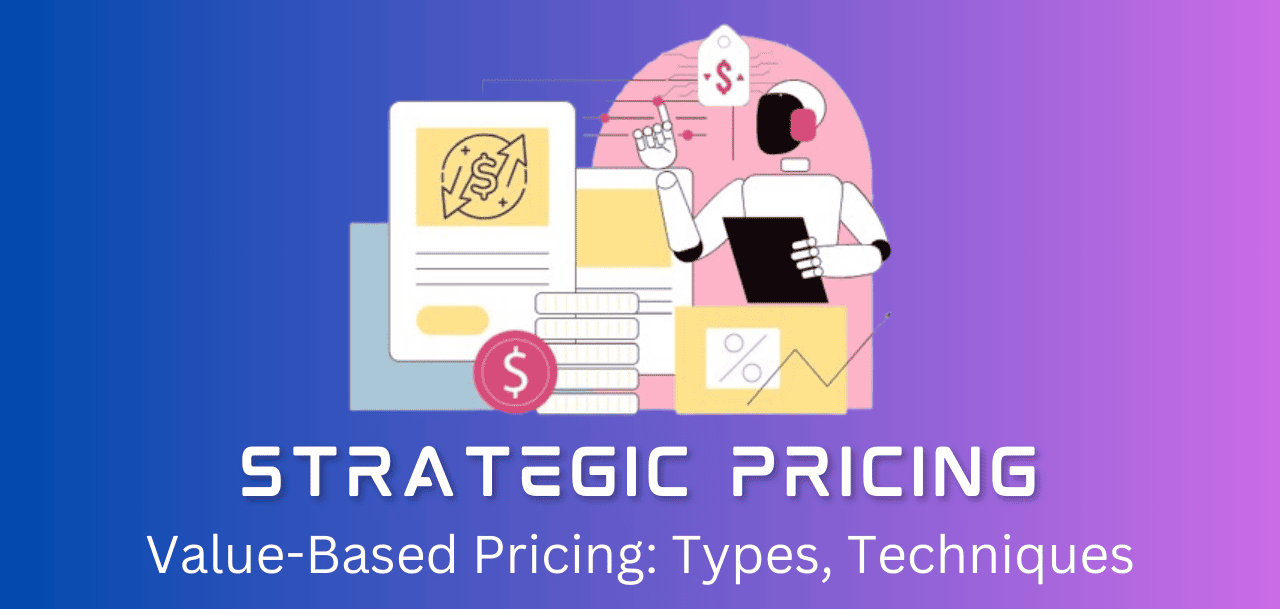In today’s competitive and customer-centric markets, businesses no longer rely solely on production costs to set their prices. Instead, a growing number of companies adopt Value-Based Pricing (VBP) — a pricing strategy that revolves around the perceived value a product or service holds for the customer. Whether it’s a simple cup of tea or a complex pharmaceutical solution from Pfizer, prices are increasingly being determined not just by how much it costs to produce, but by how much value the customer associates with it.
How Are Things Priced?
Pricing strategies vary widely. For instance, the cost of a cup of tea can be set using:
- Cost-Plus Pricing: Adding a fixed markup to the cost.
- Going Rate Pricing: Matching the prevailing market price.
- Value-Based Pricing: Charging based on the customer’s perception of value.
While cost-plus and going-rate pricing focus on internal costs or competitors’ prices, value-based pricing puts the customer at the center of pricing decisions.
Companies like Pfizer exemplify this approach by charging based on the health and longevity benefits of their drugs — not merely on production cost. This reflects a broader market trend where competitive pricing acts as a proxy for perceived value, and many prices in modern economies are fundamentally rooted in value, not cost.
Cost-Plus vs. Value-Based Pricing
Understanding the distinction is key:
| Criteria | Cost-Plus Pricing | Value-Based Pricing |
|---|---|---|
| Focus | Internal production cost | Customer value perception |
| Price Drivers | Cost + Markup | Willingness to pay |
| Sequence | Cost → Price → Value | Value → Price → Cost |
| Orientation | Product-centric | Customer-centric |
(Harmon et al. – Value-Based Pricing for Software)
Why Value-Based Pricing?
Pros:
- Aligned with customer willingness to pay: Reflects what buyers are ready to spend.
- Captures consumer surplus: Enables higher profits by tapping into the excess value customers receive.
- Reduces market failure: Prices signal value accurately, leading to better resource allocation.
Cons:
- Challenging to measure value: Customer perceptions are not always easy to quantify.
- Time and resource-intensive: Requires research, surveys, and analysis.
- Diverse customer preferences: Heterogeneous market segments may value products differently.
Types and Techniques of Value-Based Pricing
To overcome challenges and effectively implement value-based pricing, several techniques and models have been developed:
1. True Economic Value (TEV)
TEV is calculated using the formula:
PNew = PNBA + ΔBenefit - ΔCost
Where:
- PNBA = Price of the next best alternative
- ΔBenefit = Additional benefits over the alternative
- ΔCost = Extra cost incurred by the customer
This approach is data-intensive and typically used in B2B or high-value markets.
2. Van Westendorp Price Sensitivity Meter (PSM)
Developed by Dutch economist Peter Van Westendorp, this model helps identify acceptable price ranges through consumer surveys.
Core Questions:
- At what price is the product a good value?
- At what price does it start to feel expensive?
- At what price is it too cheap to be trustworthy?
- At what price is it too expensive to consider?
The resulting data is plotted on cumulative frequency curves to determine:
- Point of Marginal Cheapness (PMC)
- Point of Marginal Expensiveness (PME)
- Optimum Price Point (OPP)
- Indifference Price Point (IPP)
- Range of Acceptable Prices (RAP)
This technique assumes that consumers can visualize value and respond rationally to price perception.
3. Gabor-Granger Pricing Method
Named after André Gabor and Clive Granger, this technique identifies the maximum price a customer is willing to pay:
Approach:
- Present respondents with up to 5 different price points.
- Use a purchase intent scale: Definitely Buy → Probably Buy → Neutral → Probably Not Buy → Definitely Not Buy.
- Adjust price up or down based on top 2 responses.
- Continue until the highest acceptable price is identified.
This iterative method is useful for new product pricing and market segmentation.
4. Experimental Approaches
Here, products are tested under controlled experimental settings:
- Multi-cell design: Each group (cell) is exposed to a different price.
- Variables tracked: Purchase intent, perceived value, actual purchase behavior.
- Analysis: Compare average purchase rates across price points.
This real-world testing method captures behavioral insights and price sensitivity.
5. Conjoint Analysis
Conjoint Analysis is a survey-based technique that uncovers how customers value various product attributes.
Key features:
- Simulates real-world trade-offs.
- Identifies utility or part-worth values of each attribute.
- Helps create market models to estimate share, revenue, and profit.
Types of conjoint analysis include:
- Ranking-based
- Rating-based
- Choice-based
Widely used in technology, consumer goods, and services, it gives deep insights into what customers truly value and how much they’re willing to pay for each feature.
Key Notes
Value-Based Pricing is a powerful strategy for businesses aiming to align pricing with customer perceptions, maximize profitability, and deliver superior value. Unlike cost-plus pricing, it prioritizes what customers are willing to pay based on perceived benefits rather than production costs.
From analytical models like TEV, and perceptual methods like PSM and Gabor-Granger, to advanced statistical techniques like Conjoint Analysis, VBP provides a versatile toolkit to help firms thrive in value-driven markets.
As markets evolve, embracing value-based thinking becomes not just a pricing strategy, but a cornerstone of customer-centric innovation.


